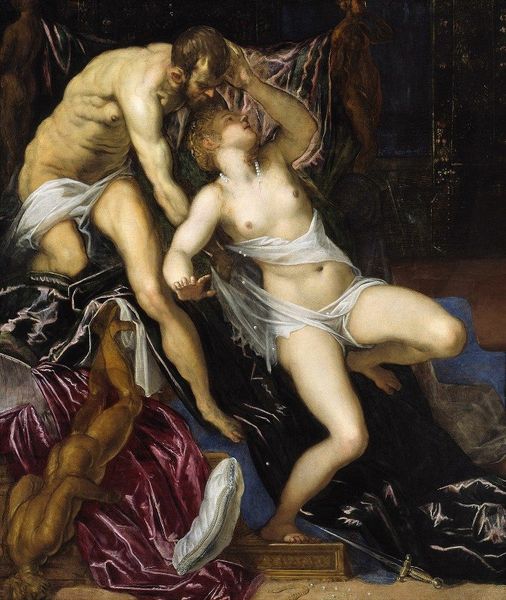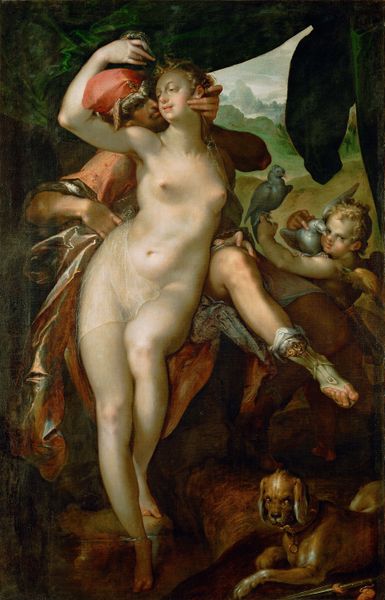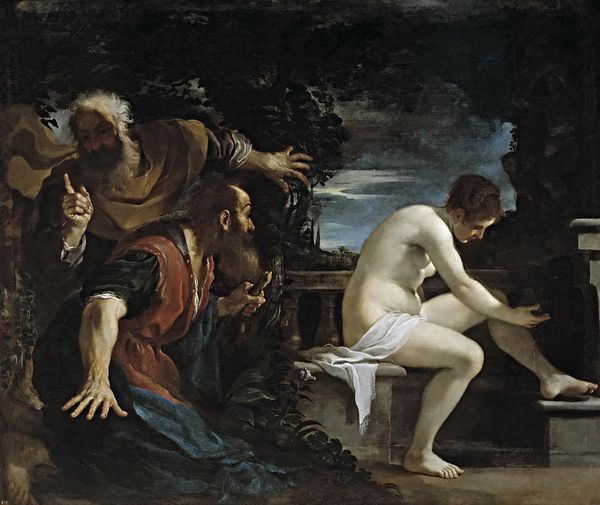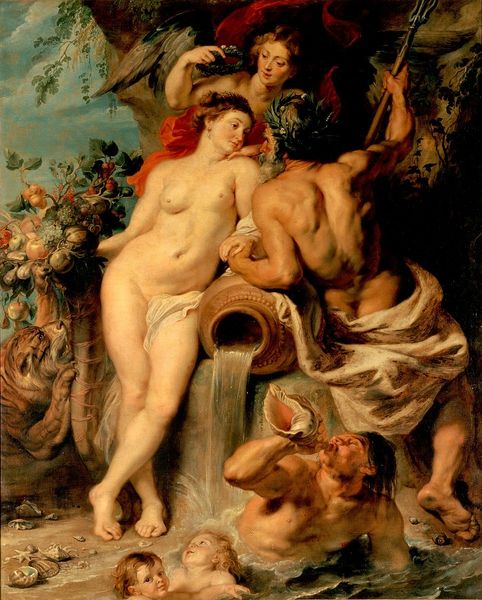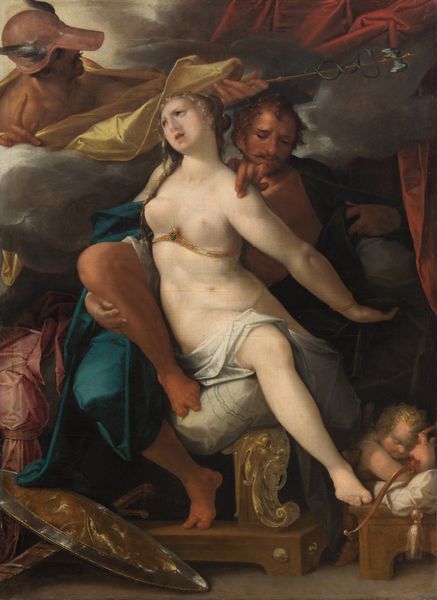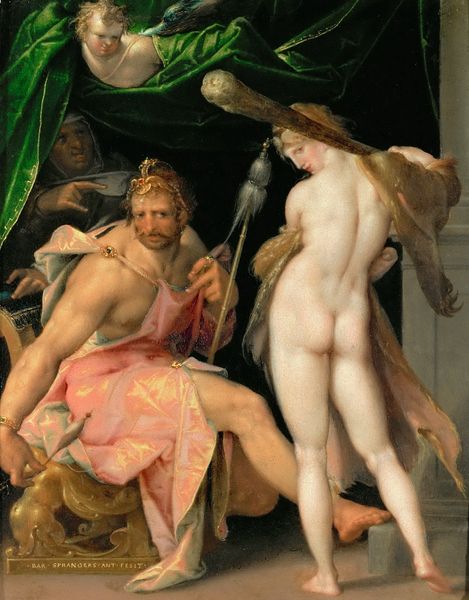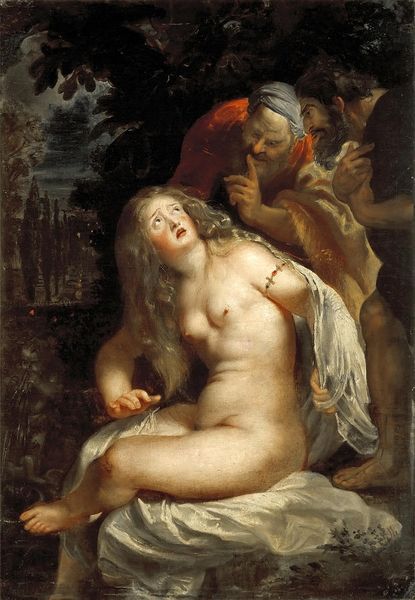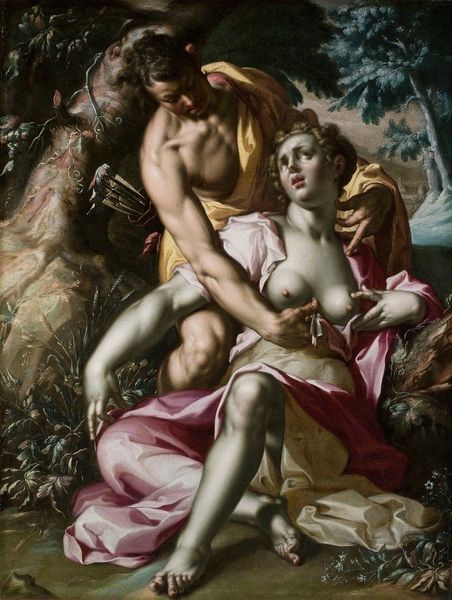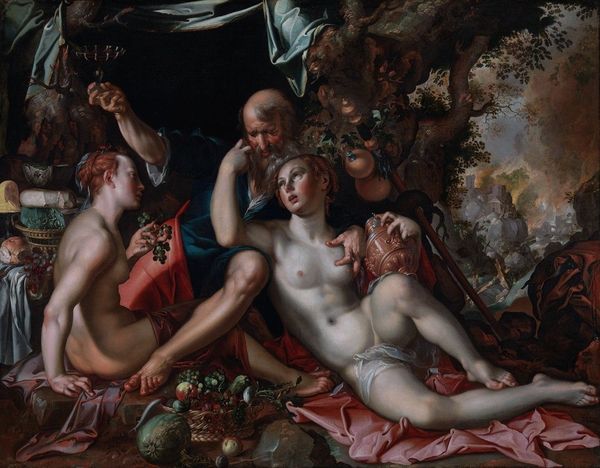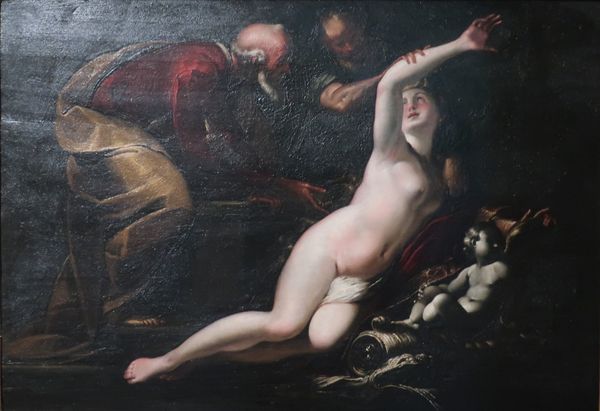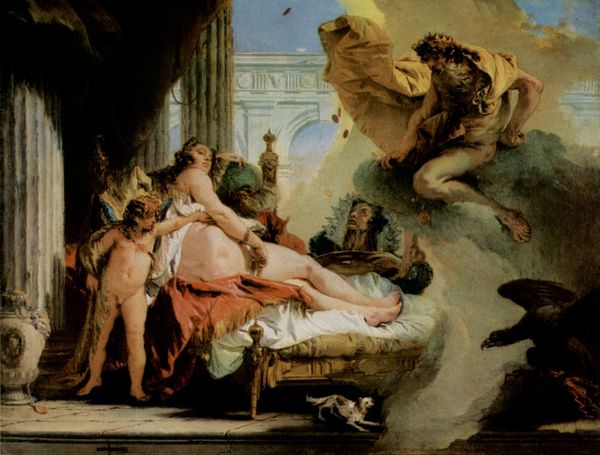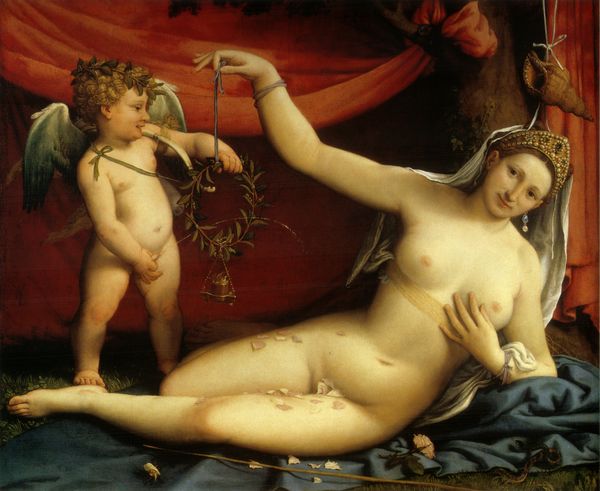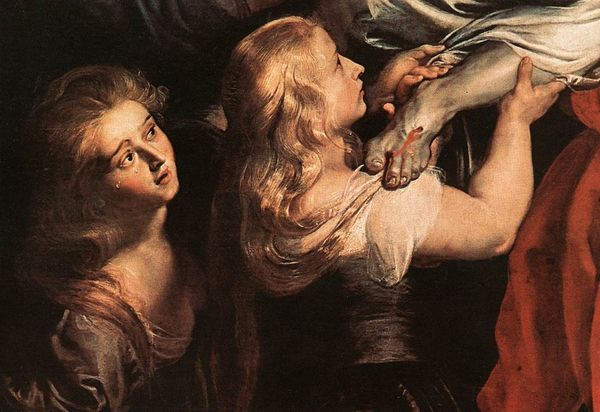
painting, oil-paint
#
allegory
#
baroque
#
painting
#
oil-paint
#
roman-mythology
#
mythology
#
genre-painting
#
history-painting
#
nude
Dimensions: 56 x 43 cm
Copyright: Public domain
Curator: Walking up to this canvas, you’re confronted by Giovanni Battista Tiepolo’s "Susanna and the Elders," painted in 1723. Quite a story unfolding in oils, wouldn’t you agree? Editor: It certainly feels charged, doesn't it? My first impression is one of shadowy menace punctuated by that creamy, almost luminescent skin tone. There's something not quite right in the space. Curator: Absolutely. Tiepolo plunges us into a biblical tale laden with lust and moral reckoning. Susanna, caught unaware by these leering old men in her bath. A symbol of beauty, innocence and purity under siege, don't you think? Editor: Exactly! It’s like a visual representation of that violation of privacy, tradition, and a woman’s dignity. That fear—her emotional vulnerability feels really raw even after all these centuries. But isn't Susanna also a symbol of resilience? Curator: Indeed. She chooses integrity over their twisted power, eventually escaping with her virtue intact, remember? And isn't it intriguing how Tiepolo plays with light, emphasizing Susanna’s vulnerable flesh and contrasting it with the elders’ darkened faces, symbolic of their hidden motives? Editor: The power dynamic is obvious. Notice the asymmetry? Susanna and the viewer are in the light while the elders plot and connive in the dark—literally casting a shadow of their actions into the heart of the piece. So many paintings present women as simply the subject, without giving Susanna agency and intelligence; she has both and the knowledge of those facts makes the whole ordeal that much more difficult to face, let alone look at. Curator: She's not simply a passive victim—which is empowering, especially in art of this era! The baroque era had a tendency to use bright, light colors which Tiepolo is definitely demonstrating but that could almost have a second message that this kind of sin happens in broad daylight so people cannot claim ignorance as an excuse. Editor: Absolutely, in her ordeal she becomes a symbol of the eternal tension between truth and falsehood, vulnerability and predatory intention, right? It serves almost as a psychological study on corruption and abuse, which unfortunately remains perpetually relevant. Curator: Such powerful stuff! I find myself leaving with a deep unease, mixed with respect for her unyielding virtue under intense pressure. Tiepolo had something of a knack for really unsettling his viewers! Editor: Yes! In short, this image is much more than it appears, beyond surface-level beauty. Tiepolo creates a timeless symbol with layers upon layers of meanings on multiple, fascinating levels, of Susanna herself, and all the Susannas who have had to carry that symbolism, historically and still today.
Comments
No comments
Be the first to comment and join the conversation on the ultimate creative platform.
